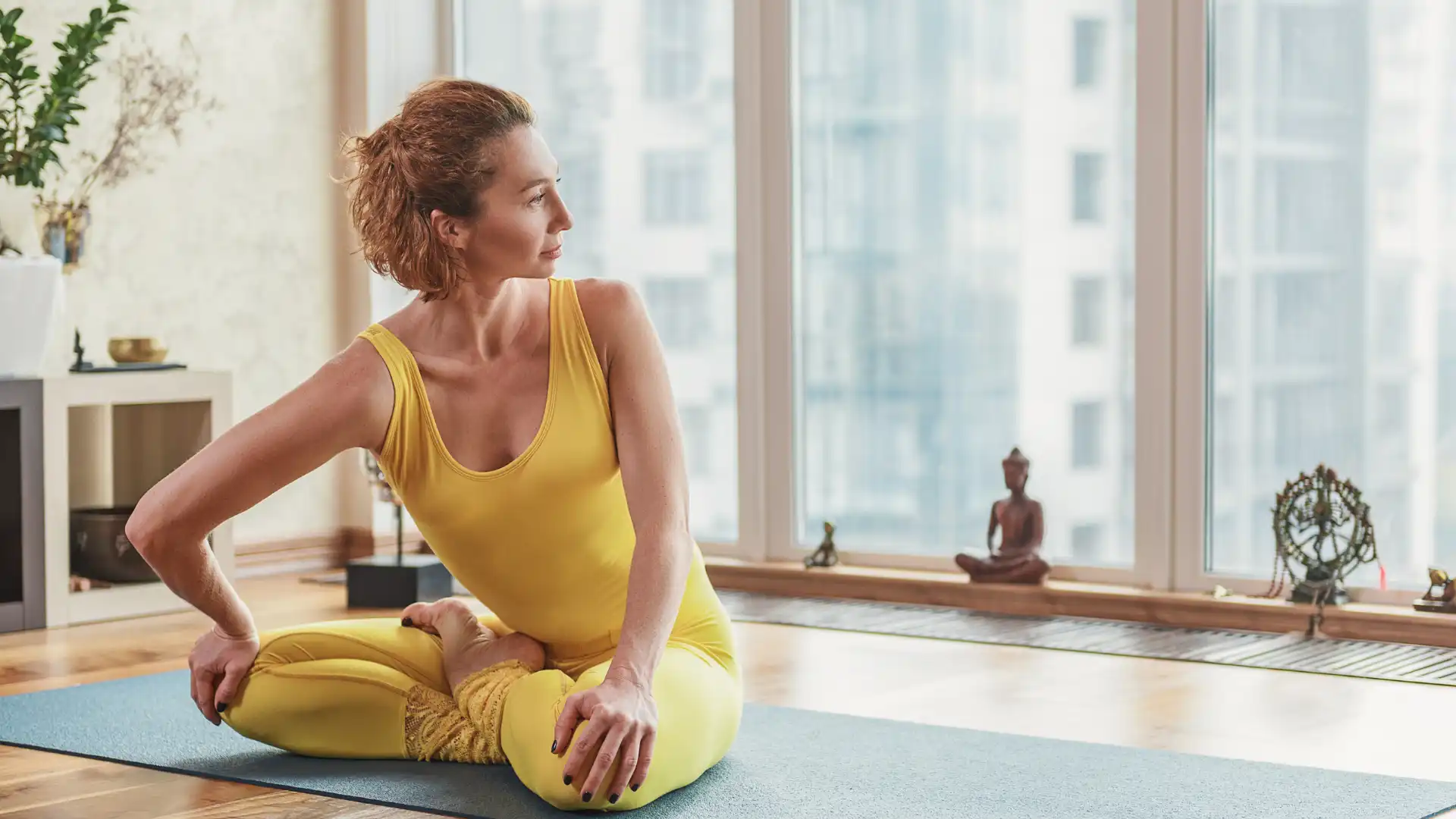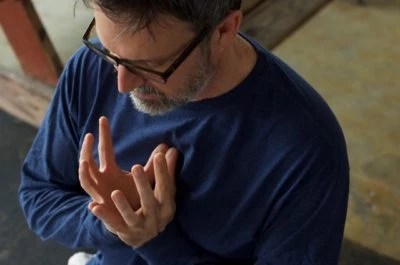Empower Your Yoga Practice: Inquiry and Agency in the Asana Practice

Some of the things that make our asana practice so effective can prove problematic if we start to misinterpret or misuse them. Many of us have experienced the hypnotic effect of linking breath, movement, and awareness. The endorphins released after a Vinyasa Flow class can be downright intoxicating and simply taking time to pause for a few minutes in Savasana can seem revolutionary in a society perpetually in the fast lane. (Savasana with many props shown in the photo below) 
I don’t mean to discount these experiences; I too love a good yoga buzz and am a sucker for a long Savasana. But my query is, when are we turning off our own physical and emotional feedback mechanisms and engaging in unhealthy practices in the name of transformation?
Yoga Is More Than Exercise
We are told that yoga is more than exercise and that yoga is inherently good for us. In many cases, these things are indeed true, but when we become addicted to the routine, the blissful feelings of our practice can cause us to tune out instead of tuning in. And if we dissociate in our practice, we might not sense when the body is telling us to slow down or stop, causing us to go beyond our safe edge and careen into pain or injury.
Conversely, we might be acutely aware of those signals and simply not yield to them under the guise that there is something larger at play. The solution is to stay reliably curious in our practice and keep tabs on our personal agency. We will then begin to notice places of potential and also of unwitting harm.
Keeping Pain in Perspective
I have a student, Allison, who started coming to yoga because of spinal stenosis and back discomfort. I recently saw her grimacing in a posture, and when I asked her if she was okay, she shook her head “no.” I inquired why she remained in the shape if she was physically hurting? She didn’t have an immediate response, but she became interested in seeking an answer. She later revealed that she stayed in the posture because she thought the intensity meant something was “shifting.”
Allison suffers from intense chronic pain and has learned to ignore her body’s feedback; something she hadn’t really explored until my question. She can sit through a level of pain that many of us can’t imagine. This can be dangerous. I never want a student to hurt in a shape or movement.
There is always a way to find equanimity; it just takes curiosity and exploration on the part of the student and teacher. This particular posture wasn’t working, and we found another option that she connected with.
A few weeks later Allison pulled me aside after class told me that she’d started keeping a pain diary and is becoming aware of places where she is powering through her discomfort. Her yoga practice is one of those places. She has been ignoring her pain as a way to live with it. Letting the volume of her pain get too loud would be debilitating, so she let it become white noise beneath the surface.
I encouraged her to listen to the loudest parts a little at a time, and she gathered the courage to do so. She now modifies her shapes, and we check in before, during, and after class to see how she is doing. An observation in a yoga posture and a simple conversation offered her a reflection into her experience—a place she’s become curious about. The relationship to her body, mind, and spirit has the potential to shift as a result.
Empowering Your Practice Through Inquiry
At its core, our asana practice is a practice of inquiry. The shapes are merely blueprints of possibility. Our personal practice is a conversation between our body and breath where respectful listening is key. It is a process where the outcome is not as important as moment-to-moment presence and attentiveness. 
For the student and the teacher, this practice of inquiry centers on relationship. As yoga teachers, we are partners with our students. When we collaborate with our students we avoid the trap of thinking we have the answers, we stay open, and we both learn.
We must embody the same spirit of curiosity and skillful observation we are asking our students to employ. Our students know their bodies better than we ever will; their autonomy is key. Yoga teachers do have specific knowledge and techniques we can offer our students, but it is up to each student to explore a technique and decide if it is working for them or not.
Students, you can empower your practice by realizing that your teacher simply guides you to places you can choose to explore. Yoga teachers offer options, not answers. Your physical and emotional anatomies are uniquely yours, and something that works for others may not necessarily work for you.
Talk with your teacher and develop a rapport that allows you to signal them when something isn’t resonating with you—it may be an alternate posture or a simple wave of your hand. If they are resistant, then it may be time to find another teacher. Calling something healing, or spiritual, doesn’t necessarily make it so; our relationships to others and ourselves determine those values.
For all practitioners, here are a few questions to consider:
-
Where might I be ignoring my body’s feedback? Why?
-
Where can I be more curious in my practice? Where can I listen more attentively?
-
What myths do I hold about my yoga practice? How do they shape how I practice?
-
Where have I given away my power? To whom or what? Where can I reassert my agency on and off of the mat?
Study Yoga for Healthy Aging with YogaUOnline and Lillah Schwartz – Yoga for a Healthy Spine: The #1 Key to Enhance Strength, Improve Posture, and Prevent Osteoporosis.
Reprinted with permission from Yoga for Healthy Aging.
 Carey Sims, RYT 500, E-RYT 200 lives in Charlotte, NC, where he teaches at NoDa Yoga and offers Chair Yoga at various senior living centers in the Charlotte area. He is a student of Adaptive Yoga pioneer Matthew Sanford (Mind Body Solutions, Minnetonka, MN.) Carey’s mission is to use Yoga to help students explore their bodies in an accepting and non-judgmental way.
Carey Sims, RYT 500, E-RYT 200 lives in Charlotte, NC, where he teaches at NoDa Yoga and offers Chair Yoga at various senior living centers in the Charlotte area. He is a student of Adaptive Yoga pioneer Matthew Sanford (Mind Body Solutions, Minnetonka, MN.) Carey’s mission is to use Yoga to help students explore their bodies in an accepting and non-judgmental way.



